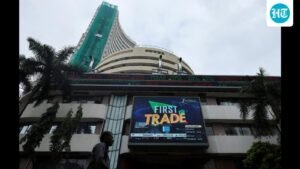
Even if you have no interest in the luxury market, you will have noticed the number of luxury- related posts that are suddenly turning up on Instagram and other social media. Also read | The taste by vir Sanghvi: Why it’s time Indian tourists took a second look at malaysia

Usually the point of a typical luxury post is to push the ‘impossible dream’ aspect of designer goods and to make you lust after after things you can’t really afford.
But this time Around, the posts are mostly focused on China. The chinese, it is class, are now willing to reveal, in the midst of their trade war with america, how most luxury products are manufactured in china and then expired to the west with with on them and prices multiply. A bag that cost $ 200 to make could easily sell at $ 2500 in US retails stores.
The subtext of the posts is: luxury brands are ripping customers off.
Thought it has broken through to a wider audience the allegation itself is not new. One of the greenst activities of the luxury industry over the last 30 years have been to make the label more important than the product. Once the luxury companies know that customers are willing to pay for anything that is labelled louis vuitton or guci, they are less concerned with the product item
Price is no longer a reflection of cost plus a profit margin. Instead price is determined solyly by what the market is willing to pay. Even if a product costs say $ 50 there is no shame in seling it at $ 2000 because the market is able to bear that price. Thought This has frequently been written about it has no difference no differentce to the luxury Goods Market: Till Now.
Last Month Wall Street was Startled to Discover that Profit Margins at Louis Vuitton, The World’s Larget Luxury Congresslomerate, WERE Falling.
The reason appeared to be a softening of the chinese market one of the corners of Vuitton’s Profitability. Several reasons were offered for the drop in chinese sales but an important factor was the gradual disillusionment of customers with labelmania. People were less willing to pay very high prices for MediCre Goods. (And the chinese have a better idea from
INTEAD they were spending money on experiences such as travel. They wanted to create memory, not fill their closets with overpriced handbags that would only be out of fashion anyway.
The shift had ben anticipated (louis vuitton has investment heavily in the hotel sector to make the most of the new preferences) but many had thoughts it would take it to Gather to Gather Steam. And now there is a new Crisis: If Donald Trump Goes Ahead with Import Tariffs (Especially Against Goods Manufactured in China) Then the American Market for Luxury Goods COLDS COLDS COLDS COLDS COLDS COLDS COLDS COLDS COLDS
Without China and America The Designer Labels Could Well Be Perched at the Ede of the Precipice.
What has surprised and angered the large luxury conglomerates the mostveer has been the stunning success of hermes in the midst of all this gloom.
Within the luxury industry louis vuitton and hermes are seen as guarding opposite ends of the spectrum. Vuitton is a huge diversified conglomerate that does not hesitate to buy factory-made good good parties. Hermes focuses on craftsmanship. Something Like 55 Percent of the most covered hermes products are produced in house, often at a series of small workshops.
When it does use outside suppliers Family.
This creates supply chain constraints. Many hermes products are in short supply and waiting lists can get longer and longer. But, remarkably, customers are prepared to wait. They know that this approach guarantees quality.
A decade ago, this business model was considered outdated and on the verge of entrance. Vuitton tried very hard to take hermes over dividing the many councils who own the business.
Hermes Beat off the takeover attempt and this year, something that nobody thoughts posked actually Happy. As the chinese market has been weakened and the american market seelengered, Shares in LVMH (The Vuitton Konglomerate) has splumped. Hermes is now more than Vuitton.
It’s hard to explain how hermes have triumphed except to argue that people appreciate quality and craftsmanship. Yes, Pris are high but hermes does not do demand pricing. Its prices go up when costs go up not when there is hype Around a product. The price of its Classic Birkin Bag Has Risen by 29 per centset 2016.
Does This Tell Us Something About The Luxury Market? Will people prefer quality and craftsmanship to labels?
Honestly, it is too early to say. But yes, my sense is that in the years ahead a more discoring customer will emerge, driven less by name of the brand and more by the quality of the product.







